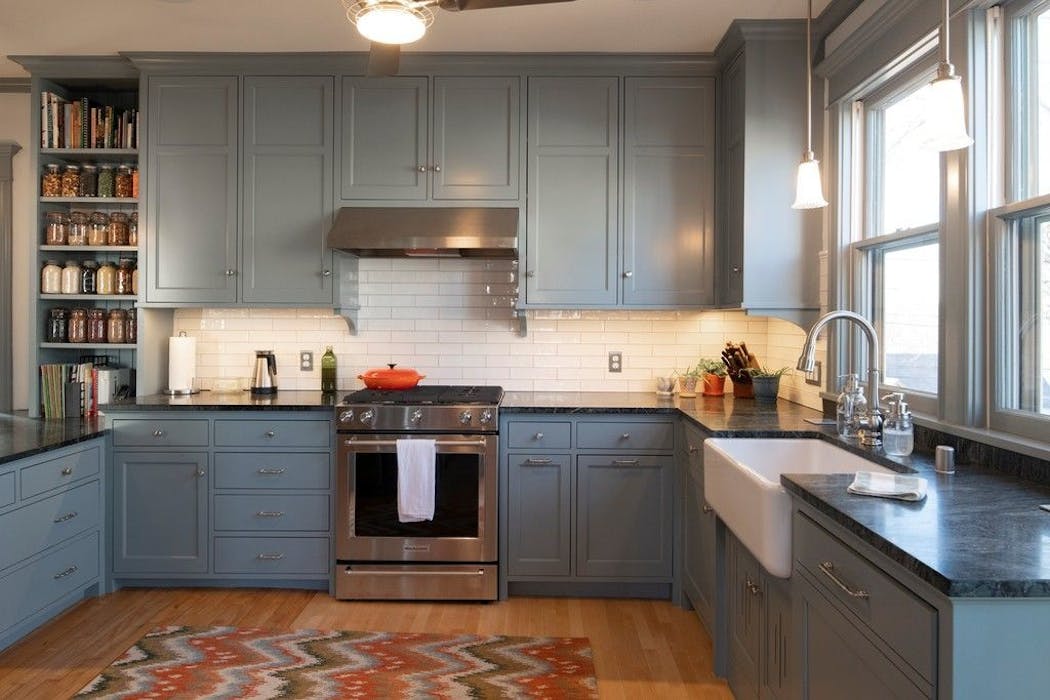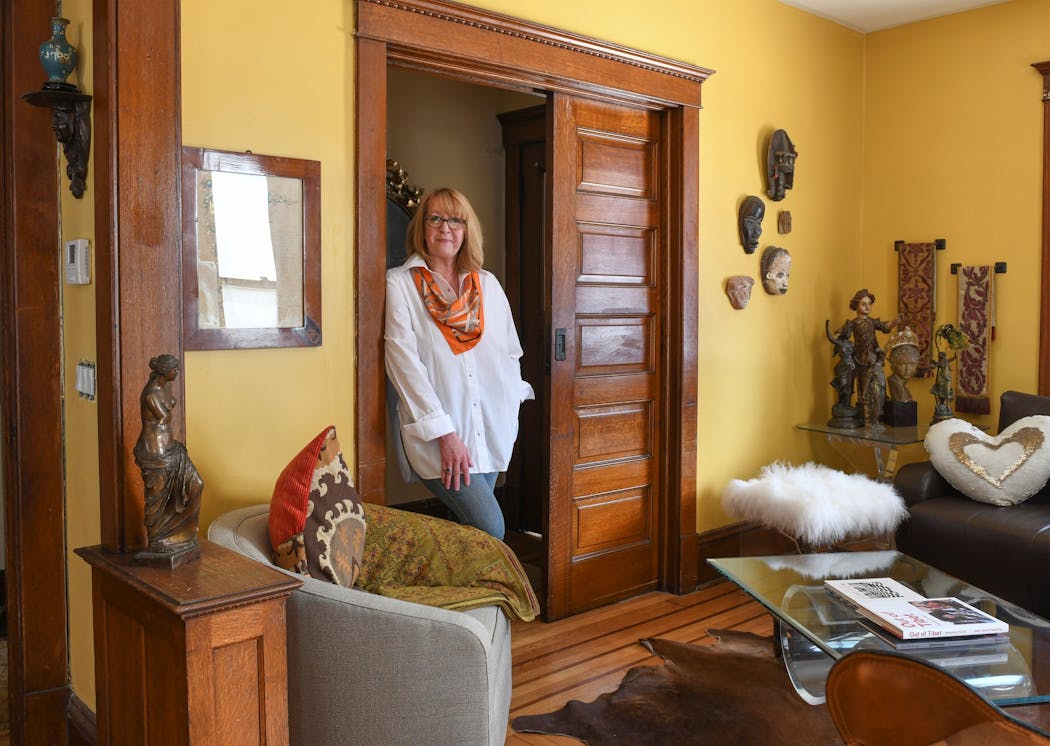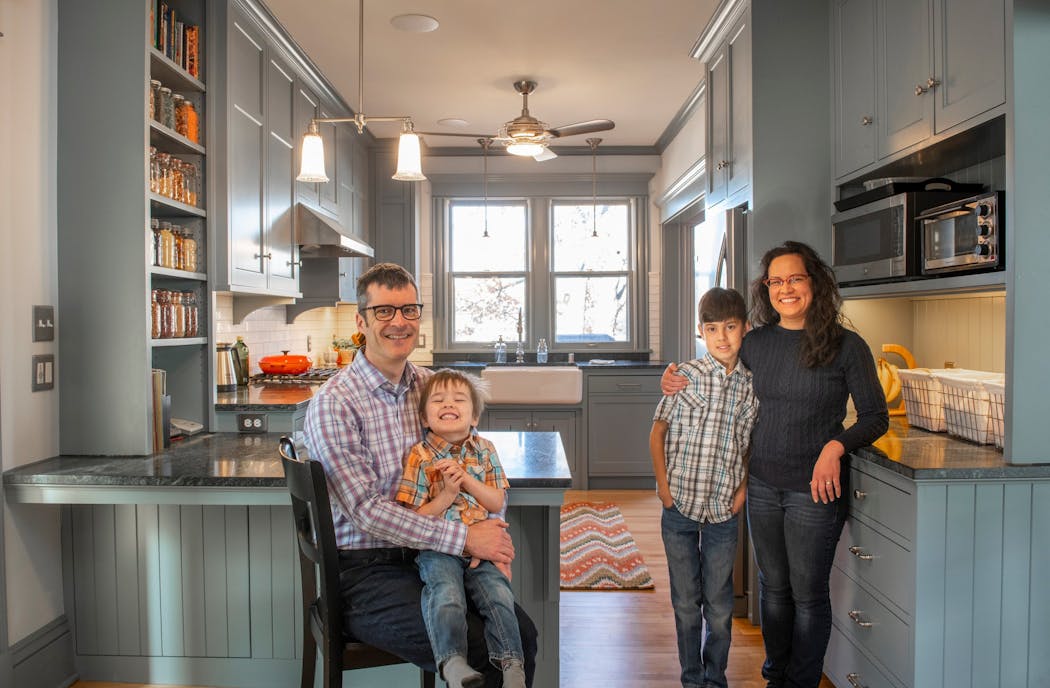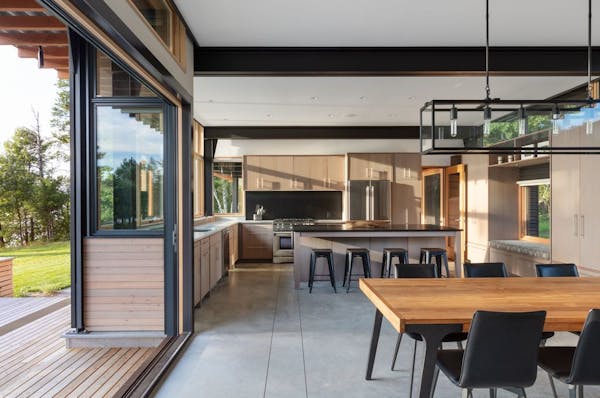Every home has a story. But the tales behind older houses in the urban core are especially rich, with dramatic chapters and transformations.
Next weekend, 48 city homes will be open to visitors during the free Minneapolis & St. Paul Home Tour. The annual event was launched in the 1980s as a way to showcase neighborhoods, housing stock and amenities.
Today, in the HGTV era, the tour has become a popular way for visitors to gather ideas and inspiration for how to retrofit a 21st-century kitchen, modern bath or open floor plan into a decades-old dwelling.
Not all homes on the tour are old; several are new, including three variations on ADUs (accessory dwelling units). And, unlike most house tours, homeowners will be on hand to share the stories of their home, the updates they've made and the resources they've used.
We talked with three owners about their passion for their neighborhoods, and the trials and triumphs of restoring an old house.
Once-condemned duplex
Nikki Carlson was living in Linden Hills when she first looked at a dilapidated duplex in north Minneapolis' Old Highland neighborhood.
The 100-year-old brick building, vacant for several years, was in foreclosure and had been condemned. There was no working heat, water or electricity.
"I looked at it with a flashlight. It was dark and cold," she recalled. But she saw beautiful pocket doors and built-in buffets. "I didn't want to see it demolished."
"Everyone" in her life tried to talk her out of buying it, but as an empty nester who had done some smaller rehab projects, she was seeking a new chapter.
She hadn't originally planned to live in the duplex, but at the time, there were city incentives to being an owner-occupant. "The breadth of the task was overwhelming," she said. "I needed to supervise."
In spring 2010, she moved in — and learned the duplex's history. The original owner was a physician who had lived on one side and practiced on the other. A later owner operated a child-care facility. Then the duplex fell on hard times. It became a drug house, with dog fights held in the basement.
Carlson hauled out dumpsters full of old mattresses and other junk. She restored the electrical, heating and plumbing systems, and hired a specialist to remove toxic materials. Many tasks she tackled herself (such as demolishing the old octopus boiler, and laying tile in the kitchen), and suffered injuries in the process.
While hauling an old radiator, she lost her footing and broke two ribs. While on a ladder trying to remove damaged bricks, she saw the wall start to topple, and leapt away, landing on a bolt that went through her foot.
But she's had a few lucky breaks, too. The 2011 tornado coincided with Carlson's struggle to replace leaky lead gutters that were built into the roofline.
"When the tornado came through, I said, 'Please, God, take my roof.' It happened. It was a miracle. Insurance got me a new roof."
Today, Carlson is living in her duplex and renting out the other side.
"Now it's a happy house," she said. And she's taken root in her friendly neighborhood.
"I accidentally moved here, but I love living here now." She planted a garden without having to buy a single plant, thanks to contributions from her neighbors.
"There are a lot of misconceptions about north Minneapolis," she said. "I take my dog for walks at night. It's not an unsafe neighborhood."
She also loves being so close to downtown. "The location is amazing," she said. "It's 10 blocks to my office in the North Loop — 4,000 steps on my Fitbit."
Carlson said she's proud that she saved her house from demolition and returned it to being a beautiful, comfortable home. Her advice to other would-be rehabbers? "Do it. It's worth it."
Reinvented Victorian
Daisy Cross and Nathan Lockwood were graduate students at the University of Minnesota in 1998 when they decided it made sense to buy a house rather than rent.
"The only neighborhood we could afford was Northeast [Minneapolis]," Cross recalled. They found a "simplified Victorian" built in 1901, that was a bit "weird," Cross said, with an odd addition on the back, a two-room kitchen (one for cooking, one for eating) and a bedroom on the second floor that was accessible only through a bathroom.
"We expected to stay one year," she said.
But their neighborhood, Audubon, grew on them. "We fell in love with Northeast," Cross said. They liked the interesting mix of people, and the easy proximity to destinations. "We're big bikers and walkers, and everything is within walking distance," including a food co-op and breweries.
Two kids and 20 years later, Cross and Lockwood were still living in their house, but increasingly frustrated with its odd, dysfunctional layout. "We didn't need a bigger house, just a better house," Cross said. "We weren't using the square footage we had."
Working with David Heide Design Studio and builder A-Squared, they removed interior walls to create an open kitchen, rework the layout on the main floor and add a guest room plus a laundry on the second floor.
The makeover has dramatically changed the way they live. "We use the space a lot more," said Cross. "The family room felt like a dead end. Now it flows. Every part of the house is used."
Their new kitchen, with its blue cabinets and soapstone countertops, fosters family togetherness. "The kitchen is so important to us," she said. "Now my husband and I can prep food and cook next to each other. The kids can be with us, sitting at the peninsula doing homework."
Many of the resources they tapped for their project they found in Northeast. "We're big into being local," she said.
The couple said they're opening their home for the tour to show what's possible.
"You can stay in your neighborhood and improve the house you have," said Cross. "It's important to us to have people stay and not move away."
A live-work 'labor of love'
Nance Derby's home wears many hats. The 19th-century brick building in St. Paul is zoned for mixed use, commercial and residential, and Derby makes the most of it.
She lives in a small upstairs unit, and also has a cozy, colorful loft, Artist's Parlor, that she rents on Airbnb. She operates a gallery and commercial art studio, Artista Bottega, and also has a mural-painting business, Acme Scenic Arts.
For a while, she had a retail store in her building, selling fine art and Minnesota-made crafts, but she recently closed that business. "It was stressful, and I wanted to have more fun," she said. She now rents out the space.
Derby bought the building 23 years ago. As an artist, "I wanted my own place, a live-work space," she said. "My daughter needed children, instead of adult artists, as friends." So she asked a real estate agent to find something very specific: a building with space tall enough for painting murals, with a garage, on a busy commercial street so clients and vendors could find her, but also in a neighborhood, where her daughter could have playmates.
"He found me a dump on West 7th," she recalled. "It was a mess. Part of the roof was caving in. There was water standing in the basement. But it had really good bones."
She bought it, and with help from friends and contractors, gutted the building to create the live-work space of her dreams. She's rewired, replumbed, reroofed and restored the brick front, replacing 1970s aluminum siding, with help from Historic St. Paul, a nonprofit preservation organization. She's restored the original wood floors, the tin ceiling in the retail space and uncovered brick interior walls under Masonite installed during the building's years as a grocery store.
"It always takes more than you realize," she said of the project. "I was insane to do it, but I don't regret it. It was a grand adventure that paid off. A labor of love."
The building has been a good source of revenue, she said. And it's given her the lifestyle she always wanted. "I can walk downstairs in my bunny slippers and go to work. I've created a vibrant little art community that comes in and out my door."
Being on the tour is a way to showcase her neighborhood, she said.
"My place is so unique — a little treasure. I need to be a steward of how great West 7th is. When I moved in, it was on the shabby side. Now it's a wonderful community that feels like a small town in the big city. The hard work of the community has paid off."
Minneapolis & St. Paul Home Tour
What: Self-guided tour of 48 homes in the Twin Cities, demonstrating different housing styles, neighborhoods and home updates.
When: 10 a.m. to 5 p.m. April 27; 1 to 5 p.m. April 28.
Where: Homes are located throughout Minneapolis and St. Paul. Download a PDF of the guidebook at MSPHomeTour.com. Print guidebooks are available at metro area public libraries.
Cost: Free.




